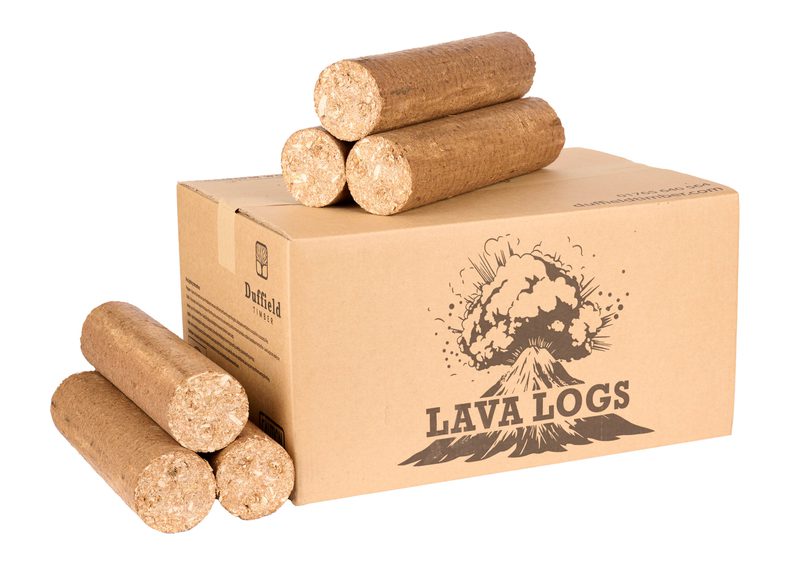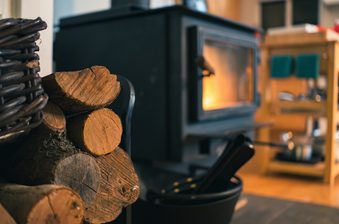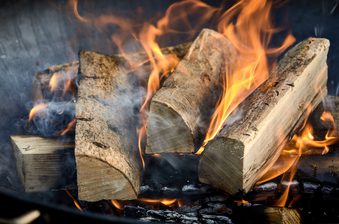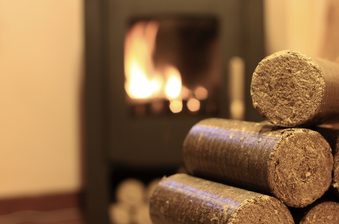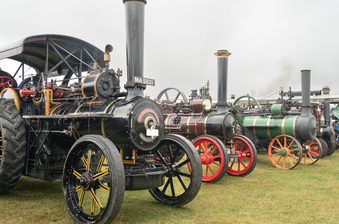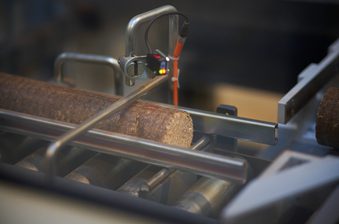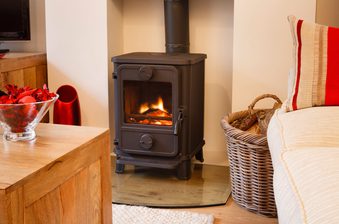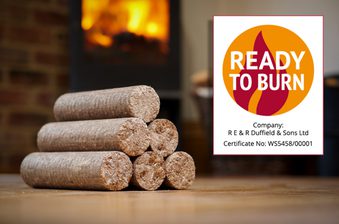For their sustainability, clean burn, cost effectiveness and convenience, wood fuels have soared in popularity recently for households and businesses.
But you might have a few burning questions about these sources of energy.
What are wood fuels?
‘Wood fuel’ is a catch-all term that can refer to wood burned for energy and heating purposes. Examples include logs, firewood, charcoal, wood chips, sawdust, pellets and briquettes.
There are direct and indirect fuels: direct wood fuels come straight from the forest or are extracted from wooded areas for energy purposes; indirect wood fuels are created from waste streams from wood processing activities.
Classed as a ‘biofuel’, wood fuels differ from fossil fuels in that they are made from biomass that renews itself over a relatively short period of time, rather than the far longer processes involved with the creation of fuels like crude oil. As long as we harvest and consume them responsibly, they will never run out.
Whilst the use of wood fuels is thousands of years old, it’s only relatively recently that its use as a biomass fuel alternative has soared. Recent advancements in the wood energy sector has allowed the development of innovative new products (such as pellets and briquettes) that have higher performance than traditional types of wood fuel.
In fact, wood fuels have been a mainstay of the energy mix of many Scandinavian countries since the 1980s, particularly in Sweden. Now, they’re gaining traction across the world as an efficient, cost effective, renewable and environmentally-friendly alternative to fossil fuels.
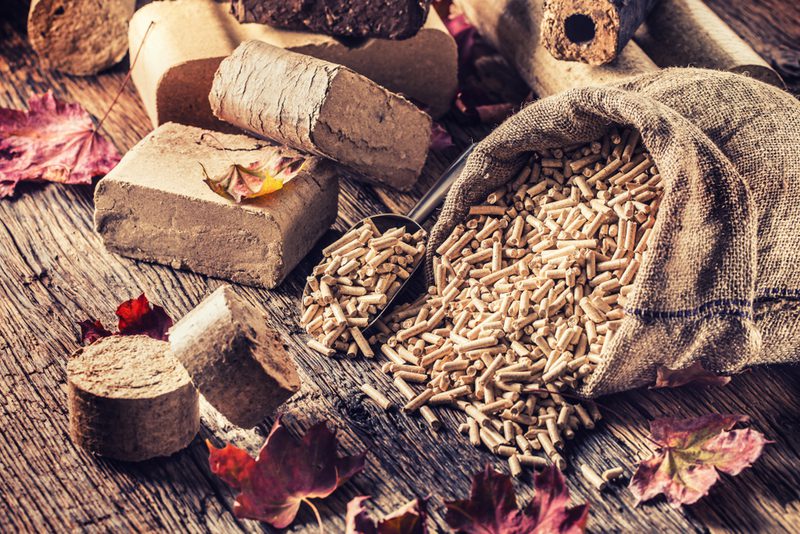
Wood fuels advantages and disadvantages
As households, businesses and governments seek to reduce their reliance on nonrenewable fossil fuels (and reduce their energy prices!), bioenergy sources like wood fuel are in.
- Sustainability: Trees can be replanted, which means when the parent material is sourced from a sustainably managed forest, wood fuels are the ultimate environmentally friendly, low carbon, renewable energy source.
- Cost: Wood fuels have favourable setup and ongoing costs, especially compared to fossil fuels — particularly with the recent increases in gas and electric prices for households and businesses in the UK.
- Accessibility: Whether that’s firewood or the pellets and briquettes, wood fuels are increasingly available to buy.
Possible downsides to wood fuels can relate to the convenience and, depending on practices, environmental impact.
- Convenience: With systems requiring refilling, wood fuel can represent a slight inconvenience. Some types of firewood can also vary in size, making storage awkward. Proper storage can be important, particularly with briquettes that are very sensitive to moisture.
- Environment: If the wood fuel is sourced from woodland that isn’t managed sustainably, the use of wood fuels can contribute to deforestation.
Wood pellets
- Uses: Home pellet stoves, automated pellet central heating systems, industrial boilers, fireplaces (with basket), power plants and even as cat litter and horse bedding.
- Calorific value: 4.85kWh/kg
- Moisture content: 5–10%
- Price: 1 x 15kg bag = approx £10
Wood pellets are small, cylindrical objects made from compacted leftover timber, sawdust and other lumber-related byproduct waste. This timber biomass is compressed to provide a low-carbon, green source of energy — a great alternative to fossil fuels.
As well as coming from 100% renewable sources, wood pellets are 100% natural, containing no chemicals or additives.
One of the most traditional forms of wood fuel, the pellets’ small, uniform shape and size means they pack in some real density. They also have a very ‘predictable’ size, making them simple to handle.
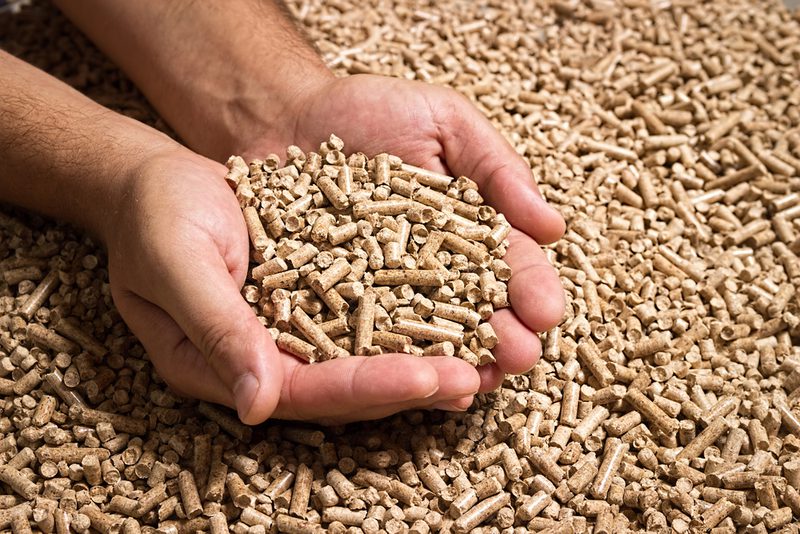
Wood pellets have a very consistent calorific value of around 4.85kWh/kg, meaning that a kilo delivers 4.85 kilowatt hours of heat energy. This compares favourably with firewood, whose calorific value is typically lower and more inconsistent.
The waste materials used to create wood pellets are heavily dried and compressed during manufacture, providing a product with very low moisture content, typically in the 5–10% region – around 50% lower than the parent material. Kiln-dried firewood logs usually have an average moisture content of over 20%.
High moisture content in wood fuel is bad news; when moist wood is burned, not only does it provide less heat, but it creates a heavy smoke that condensates, causing a build up of tar and leaving acidic residues.
Although they require electricity, occasional maintenance and can sometimes come with a bit of extra noise, these systems have everything associated with a traditional heating system, including temperature controls.
Did you know that wood pellets can be used on an open fireplace as long as you use a specially-designed basket or tray?
When you’re buying your wood pellets, look out for the ENplus A1 quality assurance certification, ideally from a Biomass Suppliers List (BSL) accredited supplier — like ourselves! It's a guarantee and assurance of premium-quality pellets.
Wood briquettes
- Uses: Wood burning stoves, open fireplaces and chimineas.
- Calorific value: 4.85kWh/kg
- Moisture content: 6–10%
- Price: 1 box of 3 packs (26kg) = approx £30; 1 pallet of 98 packs (6 briquettes per pack; 588 per pallet) = approx £450
Briquettes, meaning 'little bricks' in French, are a type of wood fuel made up of compressed waste from timber machining and sawmill operations. These byproducts are compacted using an industrial pressing rod — much in the same way as pellets.
Whereas pellets are bullet-sized, briquettes are slightly larger — most commonly rectangular and cylindrical and around 25cm x 7.5cm — weighing around 1–2 kg each. They are exceptionally energy dense compared to firewood, offering a hotter, longer and cleaner burn. They also boast a more consistent, convenient shape and size.
High quality briquettes are dried and compacted to a moisture content of around 6–10%, with a typical calorific value in the region of 4.9kWh/kg, so essentially identical to pellets (and certainly superior and more consistent than ordinary firewood). All of this means they burn hotter, cleaner and for longer.
That said, briquettes can be very sensitive to moisture in the surrounding environment. Be sure to check out our guide to storing and using wood briquettes optimally.
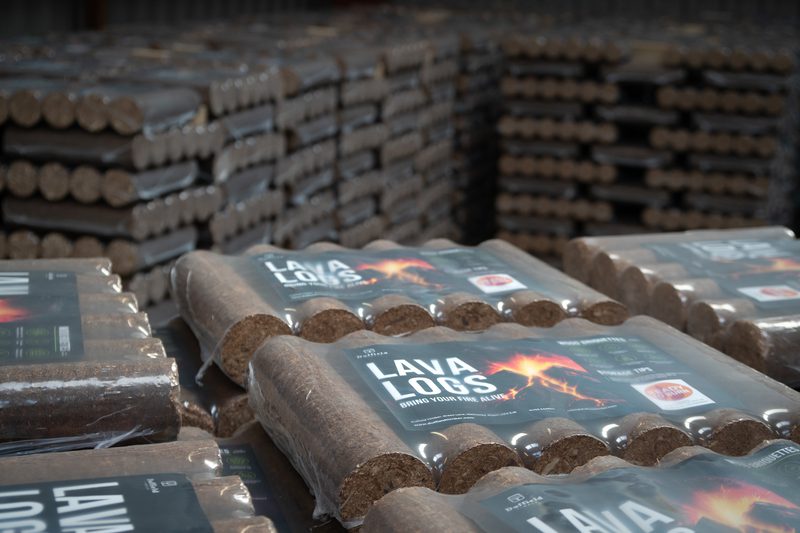
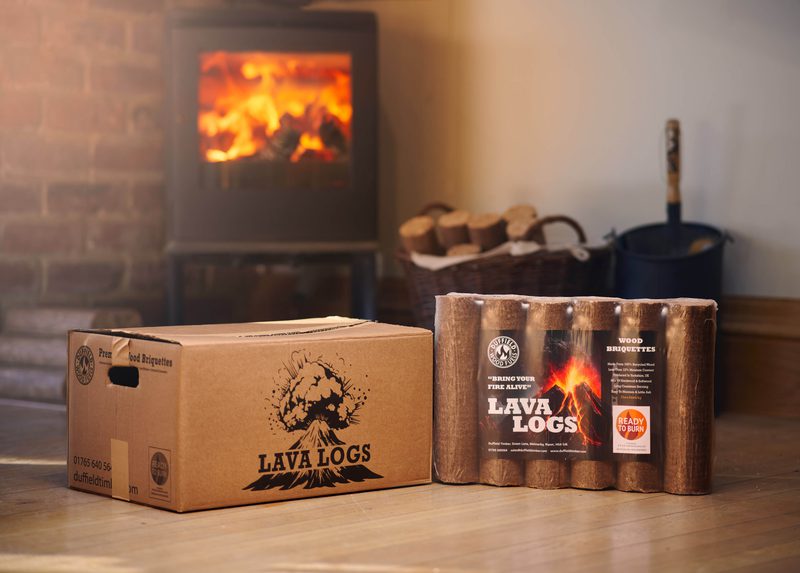
Wood briquettes: frequently-asked questions
How do briquettes compare to logs?
Kiln-dried firewood logs are the least processed form of wood fuel. As a result, they are often more widely available and can be cheaper; they can also be less fussy to store.
But choosing logs based on face value cost can be a false economy.
Briquettes are superior to traditional firewood logs in many respects. High-quality, low-moisture wood briquettes burn longer and hotter than the equivalent volume of traditional firewood. Additionally, using briquettes for heating can be more cost-effective than using regular firewood.
Our calculations show that wood briquettes are around 45% better value for money compared to firewood. This is down to greater fuel volume and superior product performance.
Briquettes are drier and more energy dense than regular logs, packing in higher calorific value. They burn hotter and for longer: the energy equivalent of logs in briquettes will take up far more space.
How does heat and energy performance differ between briquettes and logs?
We've actually performed tests comparing the heat performance of traditional firewood with wood briquettes. The results are incredibly interesting: after 2 hours 30 minutes of burn time, traditional firewood averaged a temperature of 30°C. Our Lava Log wood briquettes averaged 92°C.
Why are briquettes considered better the environment compared to coal?
While coal is a more energy-dense wood fuel, users are increasingly switching to briquettes for environmental reasons. Burning coal releases harmful toxins and large amounts of carbon dioxide, contributing to pollution and environmental damage.
In contrast, briquette production reduces waste, utilising materials that would otherwise end up in landfills and avoiding the need to cut down trees.
Are wood briquettes easy to store and handle?
Due to the size and density, wood briquettes require significantly less storage space than firewood to produce an equivalent amount of heat. They are sold in easy-to-store packs and boxes that can be stacked, and unlike coal, they won't stain hands or clothes, allowing for bare-handed handling without concerns about unhealthy dust.
Are wood briquettes cost-effective?
Made from sawmill byproducts, wood briquettes are cost-effective, especially when purchased in bulk for an entire heating season. This not only provides cost savings, but also offers ecological and storage space benefits.
How are briquettes made?
Briquettes are made by compressing biomass, such as sawdust and wood chippings, to a desired shape and density. The process involves collecting, drying, refining and shredding raw biomass material, transporting it to a briquetting facility, and using a pressing ram to compress it in the briquetting machine's chamber.
If needed, the briquettes are further dried to achieve the appropriate moisture levels.
Are briquettes eco-friendly?
Being made from waste materials, virtually all types of briquettes are highly eco-friendly, contributing to environmental sustainability.
Can briquettes be used in a wood-burning stove?
Yes, wood briquettes are a suitable choice for use in wood-burning stoves.
They are not suitable for wood pellet heating systems, however.
Looking to buy some high-quality wood fuels?
Head over to our e-commerce store.
Sustainable, highly-compacted and made from quality timber sawdust, our Lava Log wood briquettes are available in three sizes to suit your requirements.
